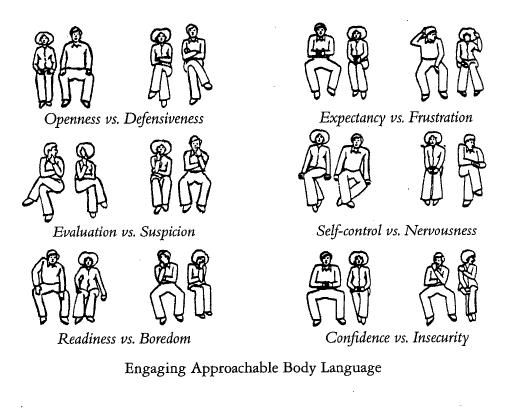The Power of Posture: How Body Positioning Conveys Messages
- khailareyno
- Apr 22, 2024
- 3 min read
Updated: Apr 28, 2024

Posture is a potent tool in screenwriting, acting as a silent yet compelling form of nonverbal communication that can convey a character's confidence, attitude, and emotional state to the audience. Consider how a character's body positioning can speak volumes about their inner feelings and intentions, enriching both the narrative and character development.
Consider the example of a character who enters a room with their head held high and shoulders back. This posture immediately conveys confidence and self-assuredness, suggesting to the audience that this character is strong and assertive. This subtle cue can set the tone for the character's interactions and relationships throughout the story. In contrast, a character who slumps their shoulders and avoids eye contact might be perceived as timid or insecure, instantly revealing their vulnerability and internal struggles.
If you want to explore the effective use of body positioning in screenwriting, revisit the chapter "Gestures and Movement: Conveying Meaning Through Actions"

Body positioning is a powerful tool for characterization in writing, as it can convey a character's personality, emotions, and intentions without the need for explicit description. The way a character stands, sits, or moves can provide subtle but significant clues about who they are and how they relate to the world around them.
In a similar vein to the chapter "Gestures and Movement: Conveying Meaning Through Actions," let's delve into how to incorporate gestures into your writing:
Body Language for Writers | Writer Brandon McNulty
Emotional Expression
Beyond personality traits, posture can also hint at a character's emotional state. By observing how a character holds themselves, whether they stand tall or slouch, whether they make eye contact or avoid it, readers can glean information about their feelings.
Consider a character who typically stands tall and confidently but is now seen slumped over with a lowered head. This change in posture could indicate a moment of vulnerability or sadness, contrasting with their usual demeanor. Similarly, a character who is usually animated and expressive but is now standing still with clenched fists might be experiencing anger or frustration.
Power Dynamics
Posture can serve as a nonverbal cue for power dynamics between characters in writing. A character's stance, such as standing tall or shrinking back, can convey a sense of dominance or submission. This can add depth to character interactions, revealing underlying relationships and tensions without the need for explicit description.
A character who stands tall, with a straight posture and perhaps even towering over others, may exude a sense of dominance and authority. This posture can suggest that they are in control of the situation and command respect from those around them.
On the other hand, a character who cowers or shrinks away, perhaps with rounded shoulders and avoiding eye contact, may convey a sense of submission or inferiority. This posture can suggest that they feel intimidated or overpowered by the other character, highlighting the power dynamic between them.
Physical Condition
Posture can be a powerful tool for conveying a character's physical condition or state of mind.
A character who stands with a straight back and strong posture may convey good health and vitality, suggesting a sense of confidence and well-being. Conversely, a character who slumps or limps may convey weakness or injury, indicating vulnerability or discomfort.
Changes in Posture
Changes in posture can serve as a subtle yet powerful indicator of a character's emotional journey or mindset.
For instance, a character who begins a scene standing tall and confident may convey a sense of optimism or resolve. However, as the scene progresses and they receive bad news, their posture might gradually slump, indicating a shift towards feelings of despair or defeat.
These changes in posture can be used to add depth to a character's arc, allowing readers to empathize with their emotional struggles and growth throughout the story.
Symbolism
Lastly, posture can be a powerful symbolic tool in writing, conveying deeper themes or ideas without the need for explicit explanation.
For instance, a character who stands with their back to the camera, gazing out over a vast landscape, might symbolize a desire for freedom or a longing for something beyond their current circumstances. This posture suggests a contemplative mood, inviting readers to ponder the character's thoughts and emotions.
By carefully considering how characters stand, move, and gesture, writers can convey emotions, intentions, and relationships in a subtle yet powerful manner. This attention to detail enriches the narrative, making characters more relatable and scenes more compelling. Ultimately, body positioning is a key element in creating vivid, engaging stories that resonate with audiences and bring the written word to life.


